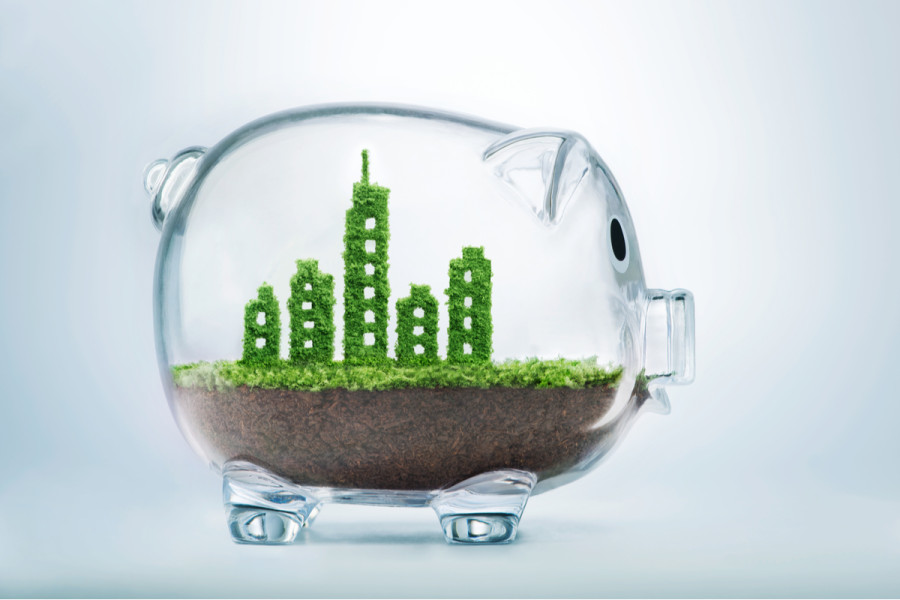Columns
Financing sustainable development
The discourse has moved beyond mere growth rates to social and economic satisfaction, which, unfortunately, remain dismal in today’s Nepal.
Madhukar Upadhya
With the sustainable development goals (SDGs) driving development priorities and policy options for the next 10 years, a major challenge that the government will face is financing the development programmes. According to the National Planning Commission, which is coordinating the implementation of programmes for the SDGs, including their localisation, we will require an annual investment of $19 billion to meet the stipulated goals by 2030. The government has indicated that it seeks international support to meet any funding gaps.
Closely linked with the SDGs are two other initiatives, the Nationally Determined Contributions, which will be finalised by the end of this year, and the National Adaptation Plan to be completed in 2021. The government has projected that it will need about $25 billion in external support to meet the conditional targets of its determined contributions.
Within the changed global context of slow growth and the Covid-19 crisis, a central debate to financing the sustainable development goals has focused on how to best manage domestic resources effectively and how public-private partnerships can be enhanced to address climate change—a prerequisite to achieving the SDGs. Accessing global funds will require the efficient mobilisation of domestic funds to implement projects which demonstrably reduce peoples’ vulnerability to climate threats.
The UN member states, through the Addis Ababa Action Agenda in 2015, committed to strengthen the rule of law and combat corruption for effective use of domestic resources to finance sustainable development. However, the recently published Global Corruption Barometer Asia 2020 paints a different picture of Nepal’s efforts in combating graft. A majority of people believe corruption has increased; this won’t help our attempts to access the support needed. Smaller symbolic funding packages won’t be sufficient to meet the huge challenges Nepal faces against its low adaptive capacity to rising climate threats.
In view of the increased recurrent cost of the federal structure, only a small portion of the national budget goes towards development work. The loss of revenue compounded by the increased cost of managing the pandemic has already cost billions and will further drain the national coffers when an effective vaccine is available for mass purchase. Circumstances could get uglier with the looming threat of a global recession. It’s past time Nepal addressed its shortcomings to create an enabling environment for external support.
Firstly, we need to see how the Nationally Determined Contributions and the National Adaptation Plan can synchronise with the sustainable development goals and remove the institutional barriers to aid their implementation. It needs to be made clear that they all aim to turn limited resources into the socioeconomic well-being of citizens and, while doing so, address climate risks. Both determined contributions and the adaptation plans are important in ensuring that climate impacts are addressed to meet the SDGs, but it’s not clear how they will support the overarching goals.
Secondly, we need to improve our domestic funding infrastructure to make sure current investments have been successful in addressing peoples’ vulnerability to climate threats, or at least show signs of improvement where value for money can be assured over a period of time.
It’s worth noting that despite the pandemic, government reports have continued to proudly highlight a high growth rate—as if that is the ultimate goal. Economic growth is a meaningless academic exercise unless the average citizen experiences the benefits of a healthy, thriving economy. If the growth rate was 7 percent last year, how did it change the lives of ordinary Nepalis? On the contrary, we have seen a higher number of people fleeing their villages during the pandemic for food and work.
In reality, the development discourse has moved beyond mere growth rates to social as well as economic satisfaction, which, unfortunately, remain dismal in today’s Nepal. Unemployment is rising. The production sector has suffered so adversely that an increasing number of people are forced to migrate abroad for employment. Farmers are being displaced from their land and occupation by floods and a loss of farmland. The biggest challenge of implementing SDGs will be to manage funds in such a way that they reach where they’re required and produce results which are measurable.
Thirdly, the budget must be as green as possible. That is, it must have a positive impact on the natural environment. Countries are already moving with increased clarity to make their budgets green. In Nepal’s case, we have no way of knowing if our budget and development programmes are negatively affecting the environment until the impacts are widely visible. Rural roads are a striking example; they’re built to help improve the economy and lives of the local people, but they often end up destroying slope stability in the hills, leading to fatal landslides and loss of farmlands. Roads are negatively impacting biodiversity, water quality, and local hydrology. Sadly, we are oblivious to these impacts and continue to build such infrastructure in a haphazard manner.
While intent matters, action is far more important. Countries that have understood the gravity of the issues have acted solemnly. For example, France established a Ministry for Ecological Transition to prepare and implement the government’s policy in the fields of sustainable development, climate, energy transition and biodiversity. Spain went a step further and established a Ministry for Ecological Transition and the Demographic Challenge to develop policies not only on forests, sea water, energy, and fighting climate change, but also on the challenges to the population.
If the job of policy makers is to create policies to address issues that concern people, what stops us from making a Ministry of Land Reclamation to begin addressing flood damaged farmlands, or a Ministry of Migration to address issues which force people to desert their land, and initiate a nation-wide programme to address the well-being of those who have abandoned farming?
Lastly, we need to increase our understanding of the nature and scope of climate impacts. It’s time to go beyond drops in snow deposits and retreating glaciers and understand how the changing climate has undermined other ecosystem services below the snowline and has affected the local economy.
When it comes to climate impacts, we need to stop thinking of it as bearing the consequences of actions we didn’t take. Though true, it won’t be sufficient to acquire support for sustainable development. The SDGs will have a high transactional cost, illustrating how money is being used and what impacts have been realised. It’s time we reminded ourselves of the commitments made in Addis Ababa in 2015 to improve the effectiveness of domestic resources to finance sustainable development. If not for us, then for posterity’s sake.




 11.12°C Kathmandu
11.12°C Kathmandu















